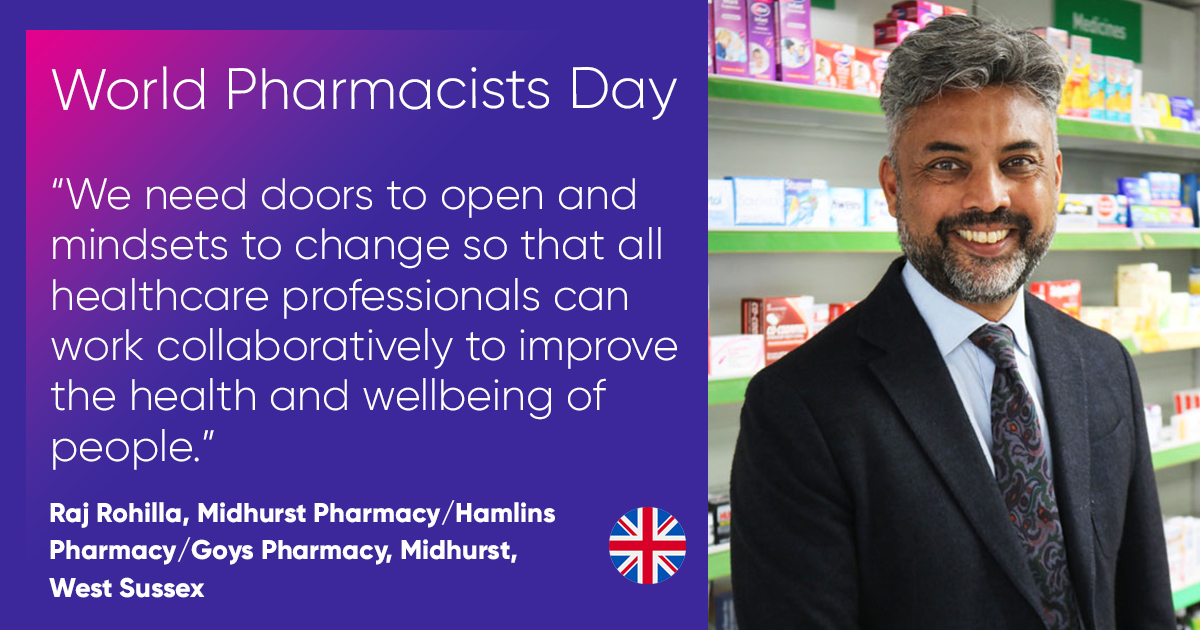Health and Social Care Secretary, Thérèse Coffey, today set out revised government priorities for health and care, including a controversial 2-week GP appointment target.
In a statement to the House of Commons on 22nd September, Ms Coffey outlined her department’s “A-B-C-D” of priorities, addressing challenges around ambulances, backlogs, social care and doctors and dentists. The NHS is under renewed pressure amid a soaring cost-of-living crisis, an elective care backlog currently estimated at 7 million, a record-high vacancy rate of 10 per cent, ahead of what is expected to be a difficult winter for health and care services.
The plans were lambasted by Labour’s Shadow Secretary of State for Health and Social Care, Wes Streeting, who said they show that the Conservative government is “out of ideas as to scale of the challenge”.
Among new measures announced were the intention to ensure “that everyone who needs an appointment with their practice within two weeks can get one”, as well as £500 million of additional funding to help with hospital discharge into social care
Outlining the new commitments detailed in Our Plan for Patients, Ms Coffey declared her intention to improve patient access to NHS services, saying that “patients are my top priority, and I will be their champion.” Ms Coffey cited “too much variation in access to care across the country,” and announced a renewed “intensive focus on primary care [as] the gateway” to accessing healthcare for most of the population.
A “Sesame Street” approach
Accused of taking a “Sesame Street” approach to policy by Wes Streeting, Ms Coffey outlined the various measures in the government’s latest plan for healthcare. On ambulances, the ambition is to “reduce waiting times and reduce handover delays” that contribute to pressures elsewhere in acute care.
With 45 per cent of delays in patient transfer from ambulances occurring in just 15 NHS Trusts, Ms Coffey assured the House that the Department of Health and Social Care would be working with these Trusts to ensure fewer handover delays. Also reiterated was the aim to have more patients seen in home settings, with the NHS England’s recently announced Virtual Wards plan aimed at relieving acute care capacity.
There are also plans to increase numbers of 999 and 111 call handlers, and the potential creation of an auxiliary ambulance service, although few further details were provided.
Addressing backlogs, Ms Coffey again cited existing policies, with “new” hospitals and more private sector involvement all cited as part of the plan to reduce the numbers waiting for care. The waiting list for elective care in England stood at 6.84 million in July 2022 and the National Audit Office has warned that this could reach 12 million by 2025 if capacity is not urgently increased.
It is also hoped that the new community diagnostic centres will also relieve some pressure on hospitals, as well as surgical hubs
The government’s policy paper detailing Our Plan for Patients also mentions commitments to expand hospital capacity through 62 hospital upgrade schemes, maximising the use of the private sector and changing elements of the NHS pension scheme to increase retention of doctors, nurses and other senior NHS staff.
On social care, the Secretary of State announced the new £500 million Adult Social Care Discharge Fund. This money will be made available to local health and care systems to target the “greatest challenges” in their area, with the local NHS and local authorities ultimately accountable for its implementation.
To address the social care workforce shortfall, currently estimated at 100,000, Ms Coffey announced a £15 million investment to help boost the international recruitment of care workers. This comes on top of the £500 million announced in April to develop, train and retain the social care workforce. Another previously announced measure mentioned by Ms Coffey is the push to digitise social care records, which is hoped to reduce bureaucracy and free up time to provide vital care.
Community pharmacy and ‘dental deserts’
A key plank of the government’s plans for primary care is the new expectation that patients receive a GP appointment within two weeks. This is hoped to be supported by a new role for community pharmacies, in which pharmacists will be able to manage and supply more medicines without the need for a GP’s prescription and is hoped to free up two million GP appointments annually.
National Pharmacy Association Chair, Andrew Lane, said: “As dedicated health care professionals, community pharmacists can certainly do more to help patients access primary care, but our sector is critically short of money to deliver new clinical services on behalf of the NHS.
“With the right level of investment, we are more than capable of new roles in sexual and reproductive health, and have a long track record in this sphere. As medicines experts, we are also well positioned to take on more prescribing.
“The NPA is wary of incentives to employ pharmacists and other practitioners in GP practices; this has already resulted in many community pharmacists in patient-facing roles being drawn away, adding to our workforce challenges and failing to add genuinely new capacity across the NHS system as a whole.”
The Department of Health and Social Care’s new “expectation” that all patients receive a GP appointment within two weeks was given a mixed reception, with Wes Streeting reminding the House that the two-day target that existed under the last Labour government was scrapped by the Conservatives in 2010.
Professor Martin Marshall, Chair of the Royal College of GPs, said: “It’s a shame that the health secretary didn’t talk to the college and to our members on the frontline before making her announcement because we could have informed her of what is really needed to ensure a GP service that meets the needs of patients and is fit for the future.
“Lumbering a struggling service with more expectations, without a plan as to how to deliver them, will only serve to add to the intense workload and workforce pressures GPs and our teams are facing, whilst having minimal impact on the care our patients receive.”
Also announced were the introduction of new digital tools and improving IT systems to ease administrative burdens on primary care. It is hoped that the introduction of new cloud-based telephone software will create an extra 31,000 phone lines for GP practices, making it easier for patients to contact their practices and book appointments. The government has also committed to publishing GP appointment data online to help patients decide which GP practices can best meet their needs.
On dentists, Ms Coffey decried the existence of ‘dental deserts’, and stated that the government has already changed dental contracts to incentivise dentists to take on more NHS patients, as well as more difficult cases. The recently established integrated care boards will have accountability over the provision of dentistry in their areas and from November, dental surgeries will be contractually obliged to share on the NHS website whether or not they are accepting new patients.
“Targets don’t create any more doctors”
On the proposals aimed at freeing up time for GPs, Helen Buckingham, Director of Strategy at the Nuffield Trust, stated that: “targets don’t create any more doctors. The success of this proposal will rest on whether the Government can genuinely do enough to retain doctors at risk of quitting the profession, as well as how successful it is in recruiting more support staff.”
“The government should step back from micro-managing timescales for appointments and instead focus on the outcomes they want to see in primary care”, Ms Buckingham continued. “With cloud-based telephone systems set to run alongside NHS 111, the NHS app, phoning out of hours and a multitude of other ways to access care, we risk simply proliferating ways for patients to find out the ugly truth of general practice: there just aren’t enough doctors to go around.”
Responding to Ms Coffey’s House of Commons statement the Interim Deputy Chief Executive of NHS Providers, Miriam Deakin said: “leaders across the NHS will appreciate the prompt steps taken by the health and social care secretary today to address her ‘ABCD’ list of priorities as we head into winter.
“The announcement of a new £500mn adult care social care fund to help tackle delayed discharges is a welcome boost, which will free up much needed hospital beds for those that need them most.
“But trust leaders will be seeking categorical reassurances that this funding will not be taken from NHS budgets, which are already severely stretched by inflation, energy costs and unfunded pay deals. And there needs to be recognition that this is a short-term contribution whereas social care needs a long-term funded plan and reform to put it on a sustainable footing.”
David Duffy, Editor of ICJ, said: “our health and care system has been locked in a perpetual state of crisis for some years now and we fear this latest plan from the government will do little to reassure staff across the country that better times are ahead.
“The secretary of state is right to highlight regional variation in access to care, however, today’s announcements will do little to address these long-term disparities. The £500 million in funding announced to assist with hospital discharge will have little impact without a comprehensive, long term workforce strategy for health and social care.
“The two-week target for GP appointments does not take into consideration that GPs find themselves under. The government should resist opting for nationally mandated, arbitrary targets without providing GPs and other primary care professionals with the means of achieving them.
“The government should instead reaffirm the aspirations outlined in its recent health and care bill and the NHS Long Term Plan – which both place addressing long term health inequality through more joined up service provision as a central priority.
“It is concerning that supporting the development of integrated care systems, and their focus on addressing health inequality through population health strategies relevant to specific regions, received so little attention in today’s announcements. Health and care leaders have long wanted to move away from nationally mandated targets in favour of localised approaches to care delivery and some may consider today a step backwards.”











